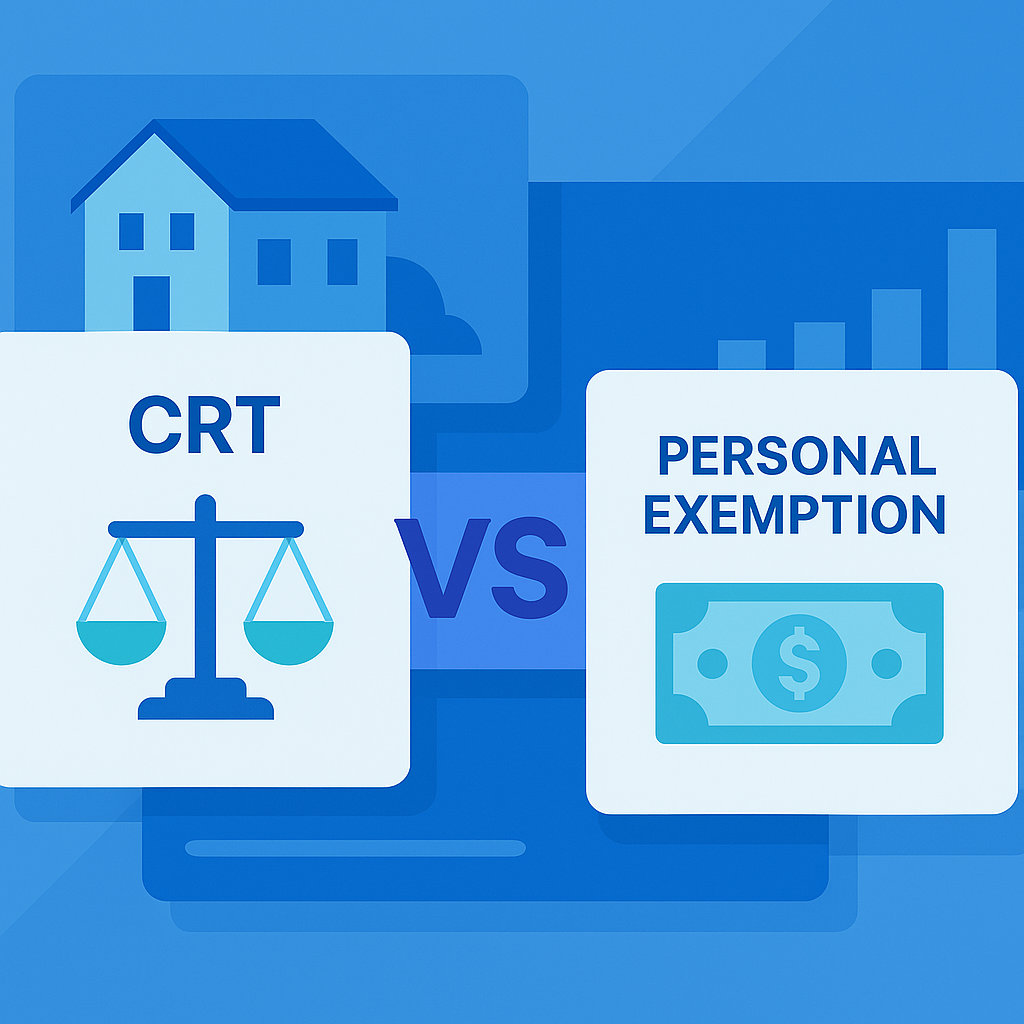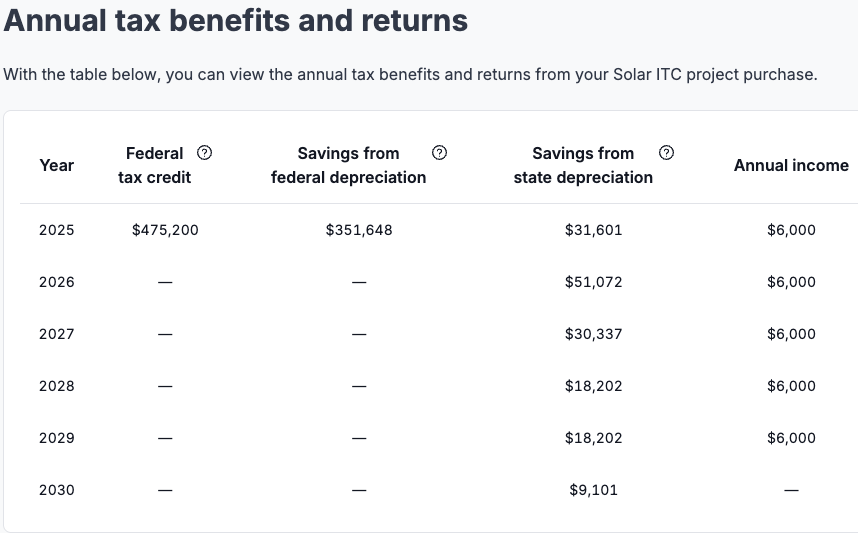
FEATURED ARTICLE
Tax Planning for Realized Gains and Ordinary Income
Tax planning strategies for realized gains and ordinary income

Tax planning strategies for realized gains and ordinary income


Active business income is the lifeblood of many entrepreneurs and self-employed individuals. It represents the earnings generated by actively operating a business or providing services. Whether you are a sole proprietor, a partner in a partnership, or an owner of a closely-held corporation, the income you generate from your active involvement in the business is considered active business income.
However, one of the downsides of active business income is the significant tax burden it carries. Fortunately, there is a solution that can help mitigate these taxes and optimize financial gains: buying solar projects.
The world is pivoting towards sustainable energy solutions and as a result, the previous administration made the largest climate and energy investment in U.S. history — allocating an estimated $369 billion in tax incentives to accelerate the transition to renewable sources like solar. The current administration reaffirmed its commitment by passing a new tax bill on July 4th, 2025, extending the tax incentives through 2027.
In this article, we will explore how individuals earning active business income can mitigate their tax burdens and optimize their financial outcomes through buying a solar Flip Partership project, which provides an opportunity to reduce your taxable income.
So let’s get started!
Buying qualified solar projects can substantially reduce active business income taxes. The basic benefits of buying qualified solar infrastructure projects are massive, and we explain them in detail in this article.
In summary, the financial benefits you receive are:
You can read more about depreciation here and the benefits of solar tax credits here. In the meantime, let’s jump into a case study to illustrate the potential financial benefits from a sale leaseback solar project. case study to illustrate the potential financial benefits from a sale leaseback solar project.
Mike and Mary are a successful couple from California that run an e-commerce company that sells toys. In 2025, their estimated income is $3,000,000 and, as a result, they are looking at $1,509,000 in federal taxes and California taxes at the end of the year (assuming they fall into the highest federal marginal tax bracket of 37% and California’s highest marginal tax rate of 13.3%). After paying their total taxes, that would leave Mike and his wife with $1,491,000.
Buying a qualifying solar project, however, could earn the couple significant tax credits, depreciation deductions, and ongoing income to mitigate their high tax burden. Below, we’ll walk through how Mike and Mary can buy a solar business to reduce their taxes in 2025.
Specifically, imagine that they choose to contribute $600,000 in a flip partnership solar project this year. As a result, the family could reduce their tax bill in 2025 from $1,509,000 to up to $650,551 and also reduce it by up to $126,403 more in the following 5 years.
Let’s now see the numbers:
Situation Overview:
Solar Impact:
Results:
Total tax savings: As a result of their solar purchase, the couple’s total tax bill will come down from $1,509,000 to $650,551 in year 1. That’s a total reduction in federal and state taxes of up to $858,449 in year 1, or 143% of the $600,000 purchase amount.
Year-by-Year Tax Savings:
Below, you can see the year-by-year tax savings from tax credits and Federal and State depreciation for Mike and Mary taking into account their particular situation.
See your potential savings with your own numbers using our online calculator here.

Tax credits and depreciation are subject to limitations based on the type and amount of income you’re applying them against in a given calendar year. However, any unused credits or depreciation can be carried forward to future years—they don’t expire or get lost. You can read more about these limitations here.
Total Income: In addition to tax benefits, this strategy includes a cash flow component. Estimated distributions are around 1% of the purchase amount, which would be roughly $6,000 yearly and about $30,000 total over five years on a $600,000 purchase amount. While projections are subject to variation, these estimates are based on typical performance.
What if Mike and Mary chose not to take part in flip partnership project?
This is, of course, a common question: How would they do if they simply paid their taxes and invested the remaining money? This is a pretty simple comparison as if the family doesn’t put $600,000 into the solar project, they would owe more than that in taxes. Given that their income is $3,000,000.
Situation Overview:
Results:
If they simply paid their taxes, they’d owe the full $1,509,000. By contrast, participating in the flip partnership would generate about $1,014,852 in tax savings and cash flow. Subtracting the $600,000 cost of the solar purchase, that’s a net gain of $414,852 compared to doing nothing.
The key point: the $600,000 they put in solar is money they’d otherwise send to the IRS and never get back. Instead, solar allows them to redirect those “lost dollars” into something that generates additional tax savings, produces cash flow, and contributes to a cleaner environment.
Some people try to compare this to investing the same amount in the stock market—but that’s not an apples-to-apples comparison. You invest after-tax dollars in the stock market. With solar, you’re putting pre-tax dollars—money you’d otherwise send to the IRS—to work for you.
Since Mike and Mary plan to use the tax incentives to offset their active income, they must materially participate in the solar business during the calendar year they claim those incentives. This ensures the solar activity is treated as an active business, allowing them to apply the tax benefits against their active income. You can learn more about material participation on our blog post or watch our explainer video.
Purchasing solar projects can be an effective strategy for high-income earners with significant ordinary income to reduce their tax liability.
How can you go about buying qualified projects? It’s relatively simple: Valur has partnered with reputable developers to make solar projects accessible to high-income earners. We help you identify and evaluate available opportunities, compare different project options, and visualize the potential benefits—using a calculator tailored to your specific income situation.
From there, we’ll help you seamlessly finalize your purchase—with no fees charged to you by Valur.
To learn more you can schedule a call with us here.
Need some help to understand which if this is the right fit for you?
We’ve built a platform that makes advanced tax planning – once reserved for ultra-high-net-worth individuals – accessible to everyone. With Valur, you can reduce your taxes by six figures or more, at less than half the cost of traditional providers.
From selecting the right strategy to handling setup, administration, and ongoing optimization, we take care of the hard work so you don’t have to. The results speak for themselves: our customers have generated over $3 billion in additional wealth through our platform.
Want to see what Valur can do for you or your clients? Explore our Learning Center, use our online calculators to estimate your potential savings or schedule a time to chat with us today!